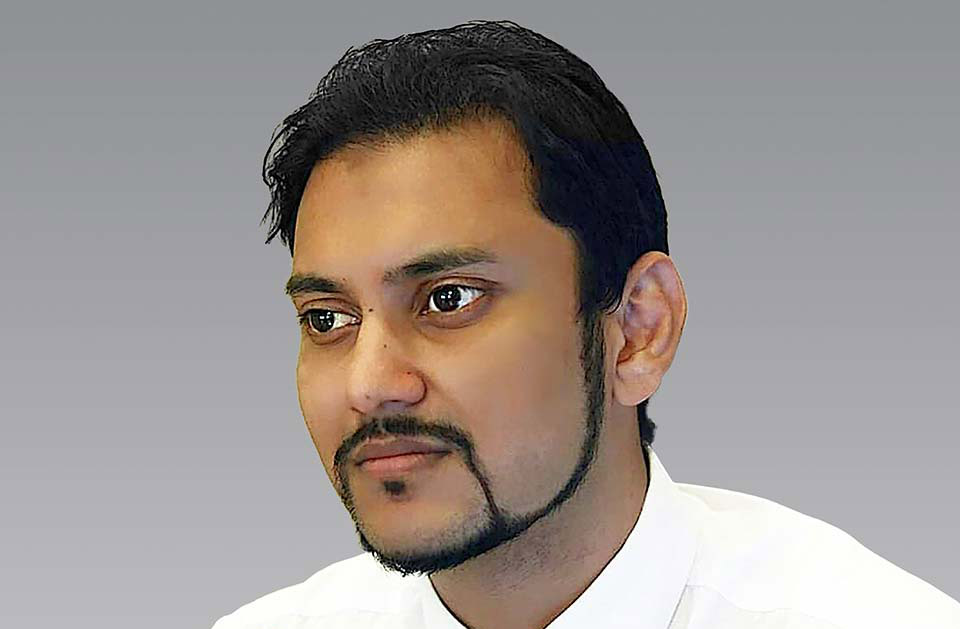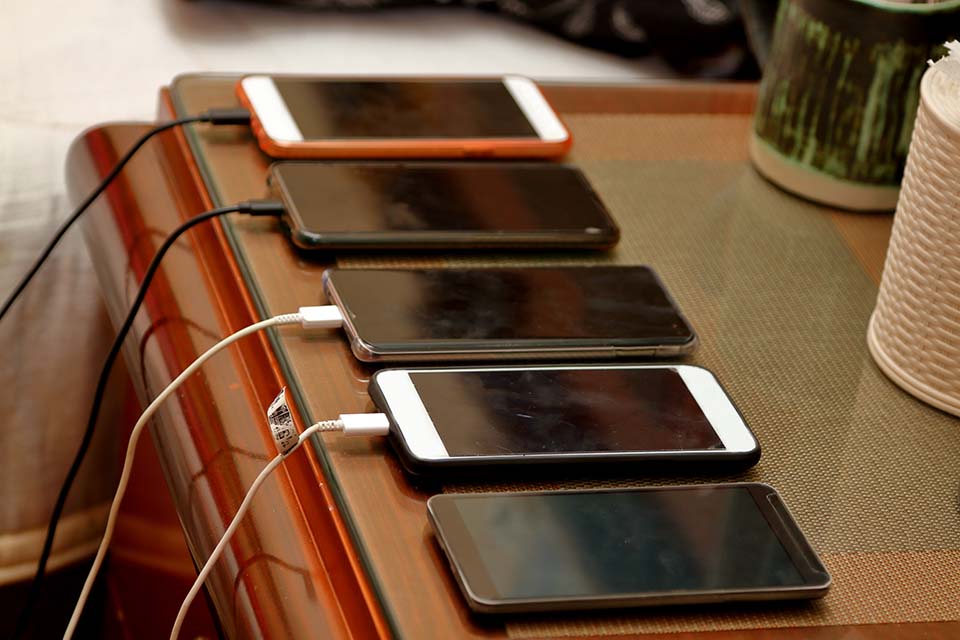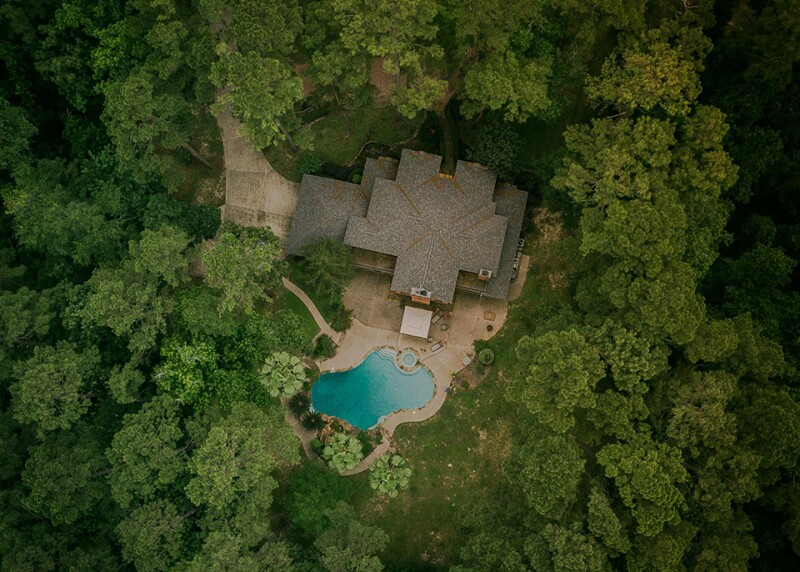In January, the State Bank of Pakistan issued no-objection certificates (NOCs) to the establishment of five digital banks in Pakistan, part of the SPB’s newest initiative to boost both financial inclusion and the broader economy.
Twenty banks applied for the licences. The winners were existing financial institutions and new ventures from a broad range of backgrounds: UAE-based bank Mashreq; Pakistani e-money institution Easypaisa; two new joint ventures Hugo Bank and KT Bank; and Raqami, a new venture backed by the Kuwait Investment Authority.
The NOCs permit the banks to set up pilot digital banking products for retail and micro, small and medium-sized enterprises (MSMEs). Once the pilots are approved and the bank has operated for a certain length of time, the NOC offers a pathway to apply for a full commercial banking licence.
The initiative is positive news at a challenging time for Pakistan.
The digital banking licences are very exciting
Humayon Dar, Cambridge Institute of Islamic Finance

The country’s ministry of finance is still tackling the impact of Covid, a devalued rupee, an energy crisis and devastating floods earlier in the year that are estimated to have caused damage worth around 10% of the country’s GDP, according to Moody’s.
Inflation was running at a 50-year high of 31.5% in February. By mid March, the country was close to signing agreement on $1.1 billion of funding from the IMF, part of a $6.5 billion bailout package that was approved in 2019. China has also agreed to refinance $2 billion of bilateral lending.
One of the IMF’s conditions for further lending is that the country raise over PRs170 billion ($613.17 million) in new taxation through a supplementary budget. Given the largely informal and undocumented nature of Pakistan’s economy, this will be a challenge – and is why boosting financial inclusion is so important.
On announcing the granting of the NOCs, the SBP said it expects the successful bidders to “promote financial inclusion by providing affordable/cost effective digital financial services including credit access to unserved and underserved segments of the society.”
Pakistan has a population of 230 million people with low levels of financial inclusion (estimated between 21% and 30%), meaning there is a big untapped market for the new digital banks. But it will not be as easy to penetrate.
Despite regular initiatives and interventions by Pakistan’s state bank over the last 20 years, the financial inclusion needle has barely moved.
Programmes to promote microfinance banks and e-money institutions, as well as gendered policies such as ‘banking on equality’, have made little impact, while private-sector lenders, microfinance banks and e-money institutions have barely scratched the surface.
“The digital banking licences are very exciting,” says Humayon Dar, director general at the Cambridge Institute of Islamic Finance. “Given the size of the market and the level of financial exclusion, these licences should allow these new banks to tap into the market, which has not been served previously.”
Reaching out
The most recent estimates place Pakistan’s unbanked population at between 161 million and 182 million people. Among women, financial inclusion is much worse than it is for men. In 2021, 28.2% of men had access to an account with a bank or financial institution, while only 13.5% of women did, according to the World Bank.
On the lending side, Pakistan has the second-lowest credit-to-GDP ratio among its neighbours after Afghanistan. Pakistan’s total credit to the private sector equals 15% of its GDP, much lower than in India (55%), Nepal (88%) and China (183%).
“Unlike in more developed markets, it won’t be a case of fighting for a piece of the pie, it will be a case of helping each other to grow the pie,” says Fernando Morillo, global head of retail banking at Mashreq. “Reaching the unserved population is a mammoth task and opportunity, so there’s work to be done for everyone.”
High mobile phone density could be an asset for digital banks expanding into this underserved market. As of June 2022, there were 194 million phones in use in Pakistan and it is expected that, particularly for low-income households, more than one person has access to each phone.
Developments in phone and mobile-first account technologies have meant that even with the prices of smartphones increasing due to a devaluing rupee, there are still access points to digital banking on affordable devices.
Some banks are getting involved in state bank initiatives to boost private-sector lending, but they aren’t being aggressive
Babur Rais, Credit Suisse

The established banks have felt the impact of this, with customer bases growing after an accelerated shift to digital banking during Covid.
Habib Bank, for example, has seen healthy growth in its customer base in the last few years.
“It took us 70 years to get a client base of 12 million in 2018,” said Habib chief executive Muhammad Aurangzeb during the 2023 Karandaaz Financial Inclusion conference. “We closed last year with 32 million clients without adding a single branch or brick-and-mortar presence, all because of digital.”
There have been a number of government initiatives to drive this digital engagement.
Raast, a high-speed online payments system, was launched in 2021. Asaan Mobile Accounts, which enable people to open branchless bank accounts with just a computerised national ID card (CNIC) and mobile phone, without the need for internet access, were launched in December 2021.
There are 13 branchless banking providers available so far, including commercial banks and e-money institutions. (Additional tax and employment information are needed to open an account at a branch outside of this initiative).
The CNIC was launched by the National Database and Registration Authority in 2000 and has since developed to include biometric verification.
“The national identity register is very advanced, only a few countries have one,” says Morillo. “It will be critical for use because it will enable us to validate identities. Pakistan has put a lot of effort into building the infrastructure, so there’s now a huge opportunity for the new digital and existing banks to leverage that.”
Lending limits
However, just as there is massive opportunity here, there are also big challenges.
“In the last 20 years, nowhere has pushed for and spoken about financial inclusion so much as the State Bank of Pakistan and yet it’s barely pushed the needle,” says one ex banker and specialist on Pakistan’s financial inclusion efforts. “It’s just not moving.”
The logistics of targeting the masses in rural areas is not easy. While digital banks are much easier to scale up than bricks-and-mortar microfinance banks, taking on new customers will always require cash collection in person. Easypaisa, one of the two largest e-money firms in the country, processes Rps100 million in cash each month – and that’s within the already financially included groups.
The big picture
The most recent round of Pakistan’s negotiations with the IMF have been under way since the start of February this year, but the route to the $6.5 billion bailout has not been easy.
“The real problem is not economic, it’s political,” says Humayon Dar, director general at the Cambridge Institute of Islamic Finance.
A general election is scheduled to take place later this year, and the political uncertainty in the country is intense. The IMF’s conditions for a bailout – devaluation and tax and energy price rises – have proved unpopular, unsurprisingly.
“The government is trying to balance implementing the IMF requirements that they can justify when they go for general elections later this year,” says Babur Rais, head of frontier markets at Credit Suisse.
The situation has not been helped by the parties politicising the bailout.
According to press reports, the opposition leader has suggested that were they to come into power, they would not stick to the conditions of the bailout.
“If they continue with the programme, the current government will definitely lose the next general election this year,” reckons Dar.
But this bullet will have to be bitten.
Once the IMF bailout is confirmed, however, bilateral support from allies including China and Saudi Arabia is set to follow.
The country will muddle through, but for people on the ground dealing with soaring inflation and a much higher cost of living, it won’t be easy.
Anyone looking to promote financial inclusion in rural areas will need agents to collect cash across the country.
“The physical agents available to facilitate cash deposits are still very few and the number is not really growing,” says Easypaisa chief executive Mudassar Aqil. “There is a tremendous amount of headroom, but it’s critical that the offline payments part of the problem is solved.”
If the new digital banks can expand the depositor base, the next question for banks will be how to assess a potential borrower’s creditworthiness. As most companies and individuals have been transacting in a largely informal economy with little credit history, this won’t be easy.
“The undocumented economy in Pakistan is huge,” says Namoos Zaheer, senior finance specialist at the World Bank. “It’s not just a question of limited supply of credit. There’s also lower demand because to access credit you need to be a formal registered business with tax records and an individual would need to show documents like bank statements.”
Once these logistical questions are solved, there is yet another barrier: cultural. Among the population of Pakistan, there’s widespread distrust of the government, banks and courts – meaning many people prefer to transact in cash.
“No one can take away your cash,” says Ammar Khan, founder at CreditBook, a startup providing technology for SMEs to keep their ledgers digitally, helping to formalize their credit history and build more data on the broader financial activity of SMEs in Pakistan.
For Khan, the way to solve this problem won’t be about providing bank accounts alone, but instead providing new financial products for clients, such as credit products.
“Transacting in cash is free,” he adds. “So, people are not going to pay a fee to transact digitally, unless there is a good reason.”
The economy is well-established in cash, even services like e-commerce are often provided against cash on delivery. Beyond having an account, there is also the question of keeping it active and in use. Only 11.5 million out of Easypaisa’s 32 million accounts are active monthly – once people have opened these accounts, they don’t seem to be using them.

One example of the financial support used in the informal economy is a rotating savings and credit association (Rosca). Similar to initiatives in other emerging and frontier markets, Roscas offer individuals in community groups a chance to save or receive credit. Each member of the Rosca will contribute the same amount each month and one member takes the whole sum on rotation.
While completely informal, in an environment where credit is so difficult to come by, this is a very common tool for Pakistanis. According to research by Oraan (an online savings committee that offers formal and digital Roscas), around 41% of the population have used a Rosca – a far higher proportion than the level of formal financial inclusion.
“We need to move away from this focus on opening bank accounts and start thinking about more utility-based solutions,” says Halima Iqbal, co-founder of Oraan. “Bank accounts should be an outcome of that, not the only solution.”
This will be particularly important when trying to improve the gender gap in financial inclusion. According to Oraan, women are 1.3 times more likely to use Roscas than men, but their access to formal financial solutions is low.
While women may have access to a mobile phone through a member of the household, the phone’s Sim card is likely to be in the name of a man, who can act as a gatekeeper.
“Giving a mobile phone to a woman is a taboo,” says Rashid Bajwa, chair at the NRSP Microfinance Bank and ex chair of the Pakistan Microfinance Bank. “And giving a smartphone to a woman is an even bigger taboo. The issue is not affordability of phones, the issue is sociocultural norms.”
According to Global System for Mobile Communications (GSMA), the main reason women in Pakistan do not own mobile phones is family disapproval. Its March 2021 report found that of the surveyed group who didn’t own a phone, 35% of women cited that as the main reason, while only 15% said the problem was affordability.
One way people are working to reduce this technology gender gap is by bringing smartphone functionality to basic feature phones that are culturally acceptable for women to own. Technology firms like KaiOS enable apps including Pakistani e-money services such as JazzCash and Easypaisa, as well as Facebook or WhatsApp on basic phones.
Lucrative market
The bank accounts and credit facilities that have been offered to the majority of Pakistan’s rural population have tended to come from fintechs, such as Tez Financial Services, and microfinance banks rather than from the commercial banks.
Of the 29 commercial banks, five control the majority (51%) of the market: Habib Bank, National Bank of Pakistan, United Bank, MCB Bank and Allied Bank. Due to compliance concerns, the war on terror and Pakistan’s previous position on the Financial Action Task Force’s grey list, very few international investment banks operate in the country – unlike in neighbouring India. A number of domestic banks have foreign ownership. For example, Dubai Islamic Bank has a subsidiary in Pakistan and Bank Alfalah is owned by the Abu Dhabi Group. The largest shareholders in Meezan Bank are Kuwait-based Noor Financial Investment (35%) and Pakistan Kuwait Investment Company (30%).
Credit Suisse is one of the few international banks active in the country. It has worked on three sukuk offerings from the Islamic Republic of Pakistan, including a $1 billion seven-year sukuk and a $2.5 billion triple-tranche 144A/RegS bond in January and April of 2022 respectively. The Swiss firm also worked on the K-Electric $414 million European Credit Agency-supported financing of a combined-cycle power plant near Karachi.
Despite the devaluation of the rupee, domestic banks have seen double digit growth in profitability thanks to the government’s reliance on domestic funding.
“In a national, domestic context, this is a lucrative market,” says Dar. “Given the state of the Pakistani economy, a lot of people would have expected the banking sector to do a lot worse than how it is. These banks pay peanuts on the money they collect through deposits and then get around a 15% return on their investment in government securities.
“It’s not a bad business at all.”
Sovereign exposure
What it is, however, is a disincentive to broadening SME credit creation. There are clear risks inherent in a banking sector with such heavy sovereign exposure – as has been demonstrated in Ghana, Sri Lanka and Lebanon after their sovereign defaults.
“In Pakistan, banks are so leveraged to the sovereign that any crisis at the sovereign level could very quickly translate into a stability crisis in the banking sector,” says Zaheer.
This has only been exacerbated by government borrowing to deal with Covid 19.
Formalizing traditional finance
Accessing financial services is particularly difficult for women in Pakistan who face a number of cultural barriers and often have to rely on joint accounts, shared with a man in the household.
Halima Iqbal, co-founder of Oraan, found this out for herself when she moved back to Pakistan after working as an investment banker in Canada and was unable to open a bank account in her own name.
She was unemployed and so didn’t have the necessary information available for know-your-customer clearance. After three months, she eventually set up an account with her husband, but this meant that any movements in the account would be disclosed only to him.
Iqbal and co-founder Farwah Tapal founded Oraan as a fintech that digitizes and formalizes the rotating savings and credit associations (Roscas) to give more financial anonymity and autonomy to middle-income women.
Roscas traditionally take place in community groups and allow individuals to access larger sums of money than they might otherwise be able to save or borrow on their own.
Online Roscas mean that people can join groups at a price point that works for them, which may be higher or lower than their network. They can also be anonymous, rather than a community group. The payments into the Rosca are also listed formally, meaning users can build up a credit history from the product, which they can’t through informal payments to friends or family.
Main benefit
The main benefit of Oraan’s formalized and Shariah-compliant Roscas is that they leverage the wide-ranging cultural and religious acceptance of these schemes to bring people into the financial system.
“While we keep beating around the bush on financial inclusion, the reality is that the customer is religiously sensitive and we need to cater to that,” says Iqbal.
To open an Oraan account, all that is needed is the national identification and a selfie to reduce fraud. Mobile-phone data is then used to judge the creditworthiness and likelihood of keeping up with the Rosca monthly payments – however, this is not a perfect substitute for credit history.
“The more we’ve worked with women, we’ve realised that the algorithms can be biased against women,” says Iqbal. “That’s something that we’re actively working on and figuring out what would be a more structured and less intrusive way of assessing credit risk.”
Oraan now has 150,000 users and rising in Pakistan.
While it shows the success of products that can work for women, it is still only a small fraction of the 230 million people in Pakistan.
“Banks are almost in a Catch-22 situation, because the government is often borrowing just to service their loans,” says one banker based in Pakistan. “It’s almost like the banks have to continue lending to the government because there’s a rollover risk if they don’t.”
In this environment, it is hardly surprising that there is little desire among commercial banks to expand into the SME sector or lend to startups and the wider mass market.
“Banks are cautious because they want to maintain good asset quality,” says Babur Rais, head of frontier markets at Credit Suisse. “They generally tend to bank the larger groups with a good track record – and that’s unlikely to change tremendously anytime soon.”
There is a clear need for a better system of private-sector credit.
The real estate sector, for example, has seen backing from the central bank to promote affordable, social housing and house building due to the shortage in supply, especially under the previous government of Imran Khan. For example, the SBP’s 2019 Policy for Low-Cost Housing Finance gave regulatory incentives for banks lending to low-income groups, such as lower housing finance prudential regulations.
“Some banks, particularly the largest five, are getting involved in state bank initiatives to boost private-sector lending, but they aren’t being aggressive in the space,” says Rais. “Given the economic environment at the moment, that’s no surprise. Banks won’t want to see asset quality take a downturn right now.”
Under full commercial bank licences, incumbent banks are able to launch all the products and services that are allowed under the new licence; however, none have done so. Introducing five new players to the market (both local household names and bigger international players) could shake things up.
Habib’s Aurangzeb accepts the need for change. At the Karandaaz conference, he discussed the new approach to agri-finance in order to create more fitting products for underserved rural populations.
“We are moving in the right direction, but we have a long way to go,” he said. “The entire banking industry, including the microfinance institutions, need the country to step up so that we can get away from the cash economy, get away from the informal economy – and things can move faster into the formal economy.”
Digital impacts
There is big opportunity for Pakistan’s new digital banks, whether they offer better credit services to those already within the financial system or push to tap into excluded sectors such as women and rural populations.
While the microfinance sector has grown substantially and now has more than eight million borrowers, its high operating costs (due to a bricks-and-mortar model) mean interest rates on loans are still cripplingly high. The Pakistan Microfinance Network estimates that the average lending rate was 38% in 2018 and that similar rates persist today. Khushhali Microfinance Bank, for example, levies an annual service charge of up to 40% on its loan products, according to its website.
Tackling financial inclusion for individuals and SMEs means more than being a mainstream player
Fernando Morillo, Mashreq

The hope is that the much lower operating costs of the digital banks will provide more affordable credit products for the five million SMEs and many millions of unbanked people in the country.
“Tackling financial inclusion for individuals and SMEs means more than being a mainstream player,” says Morillo at Mashreq. “We need to cover some gaps, and we want to help.”
Despite slow progress so far, market participants are optimistic about the impact these new digital banks could have on financial inclusion in Pakistan.
“These new banks could be a game changer precisely because of the way the regulation is structured,” says Mehr Shah, spokesperson for Karandaaz, an Islamabad-based financial inclusion non-profit.
Under the new licence, banks are restricted to retail and MSME for three years (following the pilot phase) before they can apply for a commercial banking licence.
They will then transition from a ‘digital retail bank’ to a ‘digital full bank’. This is similar to how licences in the microfinancing sector were set up, a sector that has increased in size since then.
“The state bank wants to force these financial institutions to just eat, sleep and breathe digital retail banking – and make it work,” says Shah. “That makes me hopeful that these entities will be forced to consider excluded or underserved segments of the community.”
Is that hope justified?
“The digital banking licences open up huge potential for the industry, but at the end of the day it will be all about execution,” says Naureen Hyat, co-founder at digital lender Tez Financial Services.
Even if the digital banks only focus on the already financially included segments of society, there is still plenty of opportunity. The 20% to 30% of the population that is already in the system represents a potential client base of as many as 69 million individuals, as well as any business accounts for their SMEs – that’s a market roughly the same size as France.
Thanks to its devalued currency and that potential, Pakistan should be an attractive prospect for foreign investment once the IMF bailout and bilateral capital flows are completed.
“If these things were to improve and we had political visibility and stability, Pakistan would be one of the most attractive markets in the frontier markets,” says Hedi Ben Mlouka, CEO of emerging and frontier market investors at FIM Partners. “Valuations are so low today that there is hardly any sector which isn’t interesting.”
A tale of two licence winners
Pakistani mobile-wallet provider Easypaisa and UAE-based bank Mashreq are two of the new digital banks to set up in Pakistan. The two firms are very different.
Mashreq is an established Middle Eastern bank with branches in eight countries and liaison offices in four more, including Pakistan, Bangladesh and Nepal.
Easypaisa is a Pakistani e-money institution and branch of Telenor Microfinance Bank that offers mobile wallets and payments.
For both, however, new licences could open up a wealth of opportunity, particularly in digital remittances.
Pakistan is not the only country in Mashreq’s digital expansion strategy, others include Egypt, Saudi Arabia and Oman.
“We want to establish Mashreq as the undisputed leader in digital banking solutions in this region,” says Fernando Morillo, global head of retail banking at Mashreq. “The moment we learned there was a digital banking licensing process, we knew this would be a fantastic opportunity for us.”
Expansion within the Gulf Cooperation Council (GCC) countries would mean seven separate regulatory agendas to reach a maximum population of around 58 million. In Pakistan, a single digital banking licence opens up access to a population almost four times the size. Add that to the population of Egypt, and the bank has 340 million potential customers under just two regulatory regimes.
Growth opportunities
For Easypaisa, the licence offers growth in services and products. It already has 33 million accounts, of which 11 million are active monthly. However, its e-money licence only stretches so far. With a digital banking licence, the firm can work on cross-border payments and take on larger clients in the SME space. The licence will set it apart from JazzCash, its competitor in the e-money business.

“We want to focus on small businesses and the individual user market,” says Easypaisa chief executive Mudassar Aqil. “There is a whole suite of products which have never been offered to them – and we want to work at that.”
The focus is to leverage the brand and userbase the firm has already built in Pakistan.
“As a digital platform, with lots of users, distributing these additional products actually becomes quite easy,” Aqil adds.
As Easypaisa already serves a large number of Pakistani nationals and Mashreq works with a high number of Pakistani expats in markets such as the UAE and Saudi Arabia, remittances will provide a big opportunity for both.
It is estimated that there are more than eight million Pakistanis overseas, while the World Bank puts Pakistan’s remittances market at 9% of its GDP as of 2021 (almost $30 billion).
As the digital banks open more pathways for digital remittances at competing costs, this market could become even more valuable.




